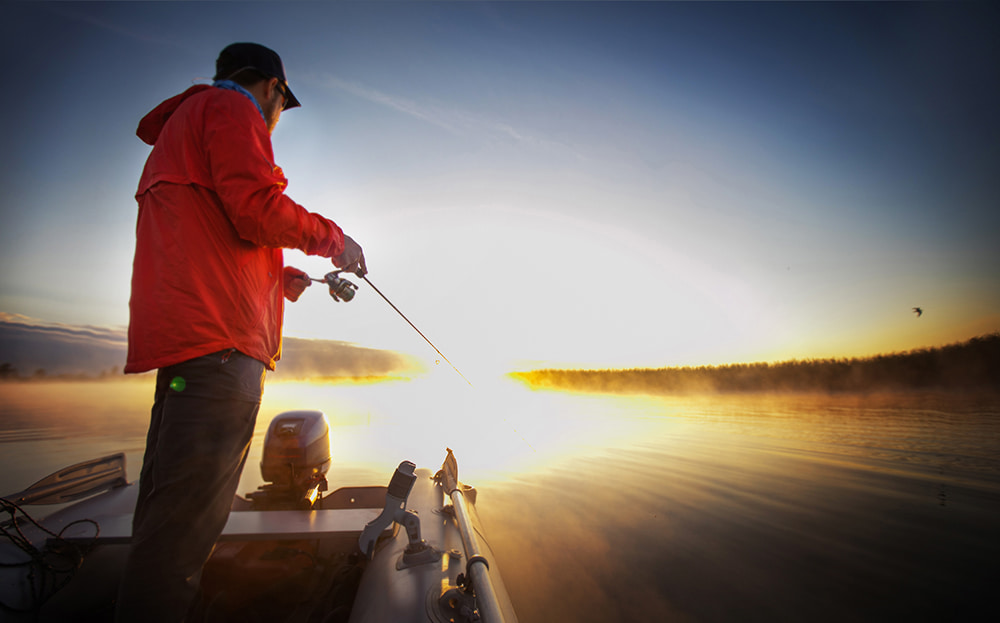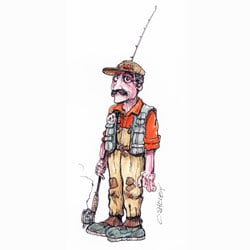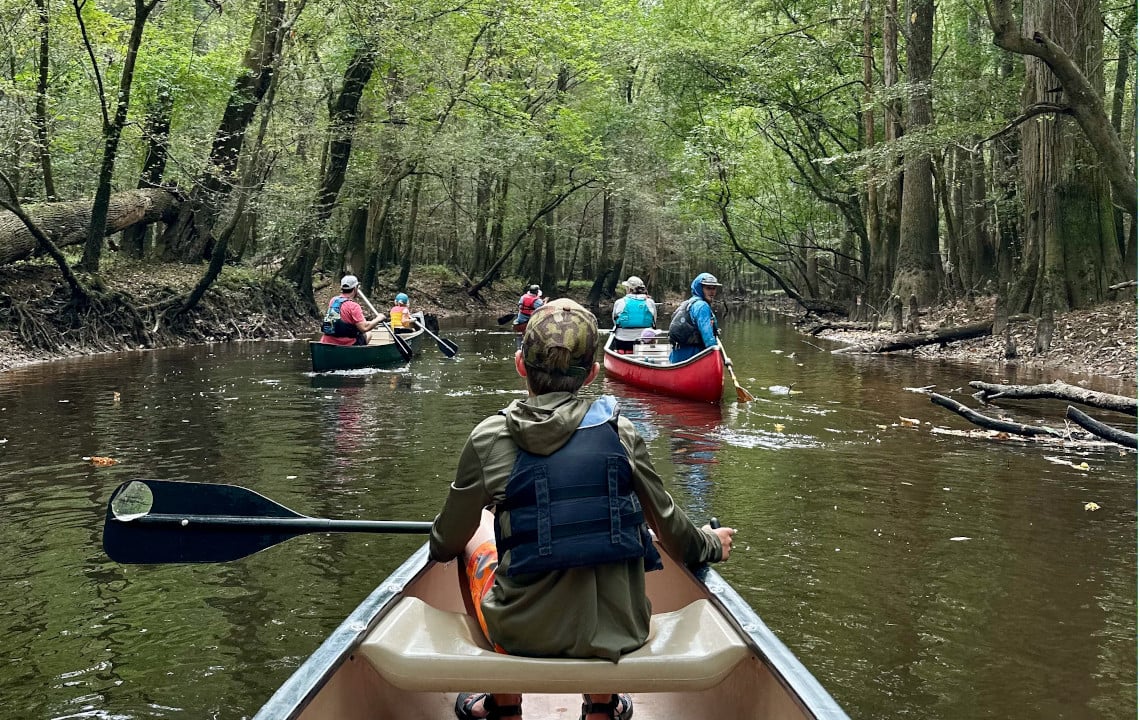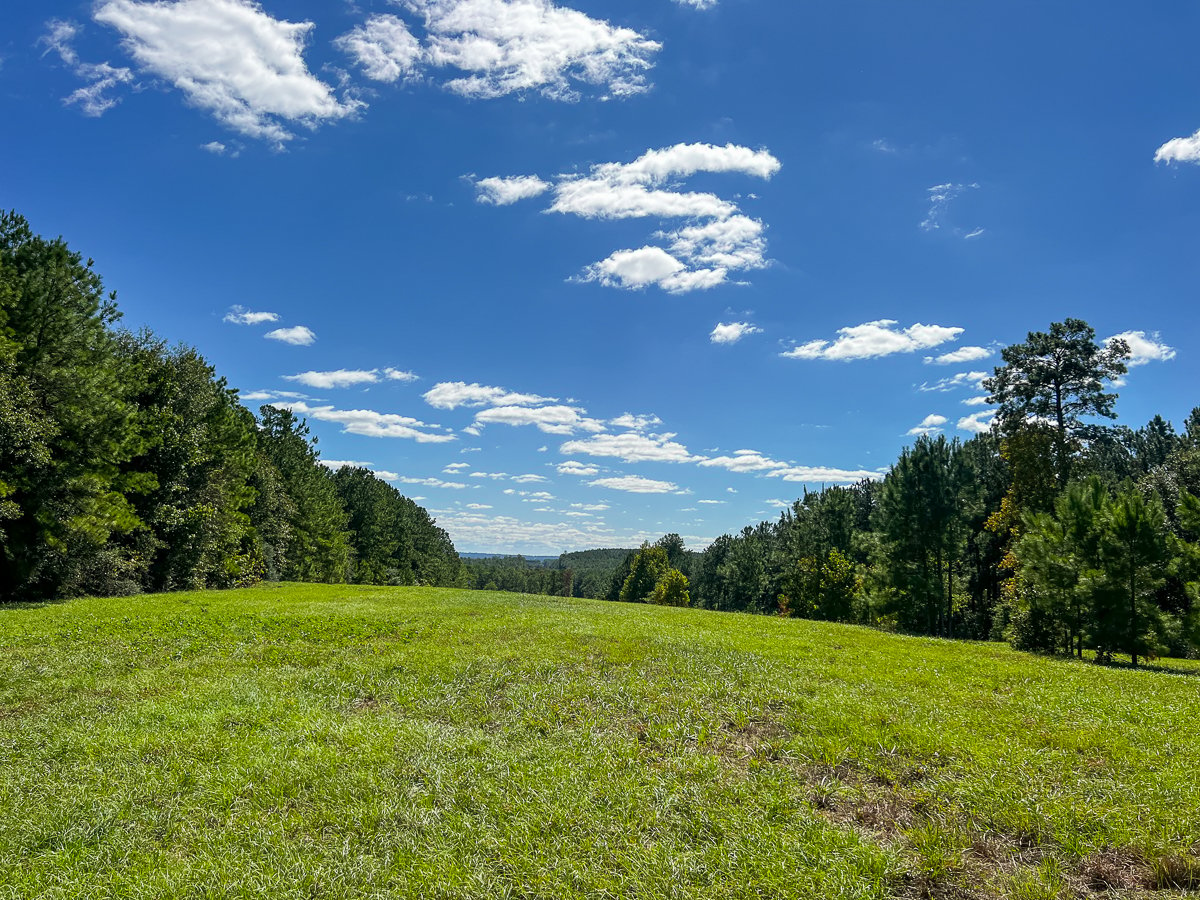When you own rural land, you have a place for “big toys”like boats. But how do you choose which boat is best? Outdoorsman Jim Mize went straight to the experts for advice.
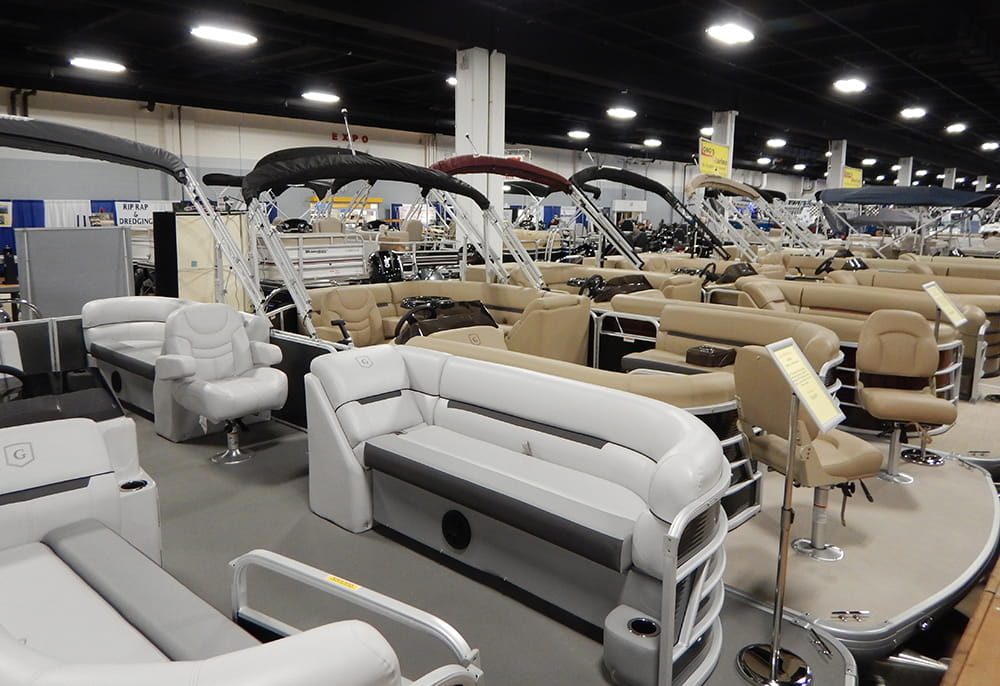
The variety at a boat show can be intimidating
Walking into a boat show with the intention of buying your first boat can be intimidating. The selection runs from Jon boats with small outboard motors to ski boats that can take up half your yard. Someplace in between is what you had in mind, but how do you find it?
I asked that question of several boat dealers at a recent show and here is their advice.
Bentz Johnson of 72 Marine Sales in Elberton, Georgia, says he starts with a few questions like, “Where do you live? What kind of water will you be on? And what kind of fish will you be after?”
“The pontoon boat market has just exploded,” says Bentz, adding that for non-fishing uses these boats have many advantages. Among these are ease of movement and capacity for people.
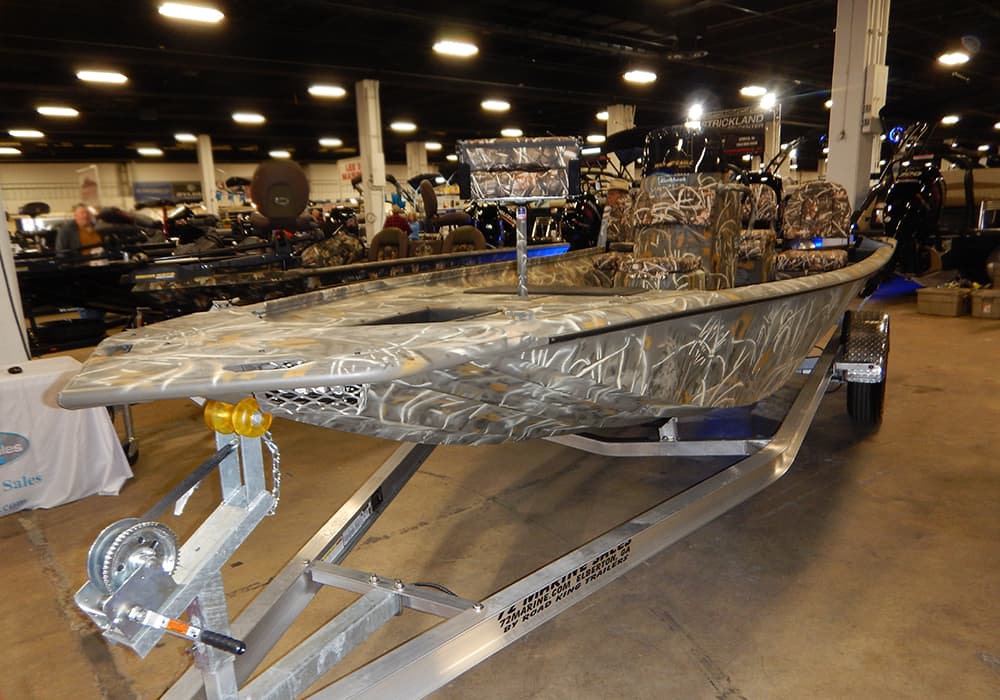
Aluminum boats are lighter to pull and can take rougher handling
“The casual fisherman who goes on weekends may want to look at aluminum boats,” he says, as their advantages include light weight for towing and their ability to take rough handling.
Looking over the fiberglass boats offered, these seem to fall in the category of serious bass fishermen as well as the fish/ski category. Comparing fiberglass to aluminum, several dealers commented that the extra weight of fiberglass gave it a little better ride.
Randy Lee of Lee’s Marine in Anderson, South Carolina, added that price also comes into the picture. Everyone has a budget they need to work within, so balancing price with use is part of the challenge.
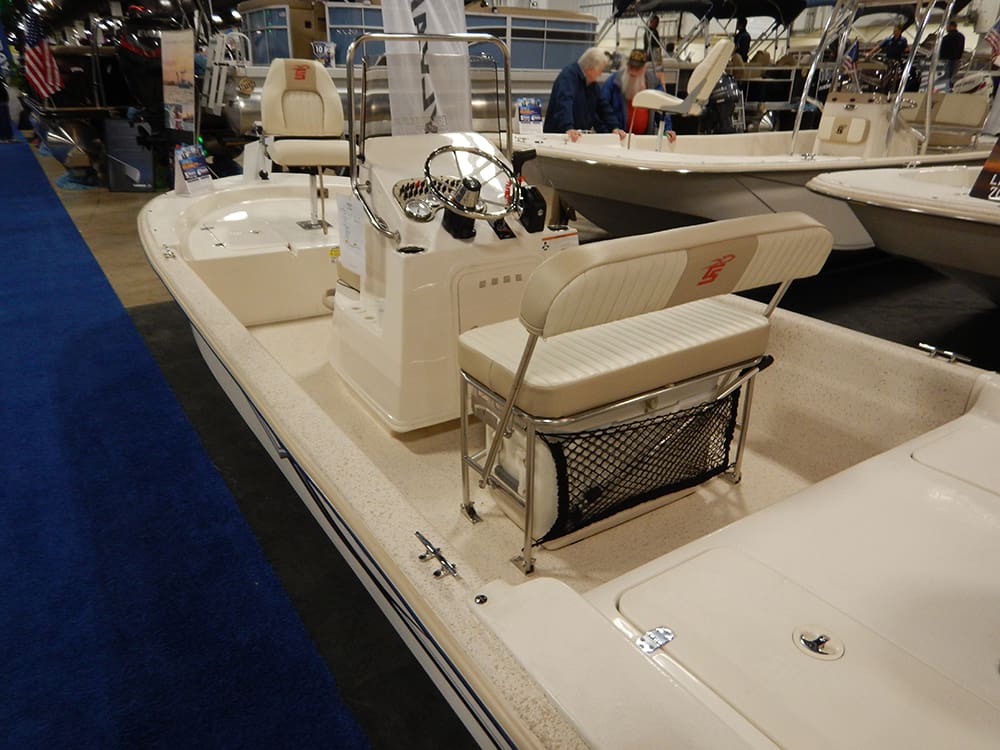
Center Consoles allow for standing while driving
Then there are the features such as whether you prefer a center console or like having the steering on one side. That choice, said one dealer, depends on whether you prefer standing or sitting while you drive. Center consoles are usually designed for standing while the side console sits lower in the boat. This choice also affects space in the boat, as middle consoles take up space, well, in the middle.
So with this guidance, I took it upon myself to select a boat based on my uses. First, I considered the type of fishing I would do and the fact that it often involves a fly rod. That means I want an open deck to cast from so I will have nothing to interfere with my line. This ruled out many boats with windshields.
Then, it needs to be stable, as I will be standing to cast usually, so I gave preference to wider aluminum boats or some of the heavier fiberglass boats.
Next, I gave consideration to the weight capacity I would need for people fishing with me. Normally it will be just one or two, but with adults that ruled out anything with capacity under 600 pounds. I found this pushed me into boats around 18 feet in length.
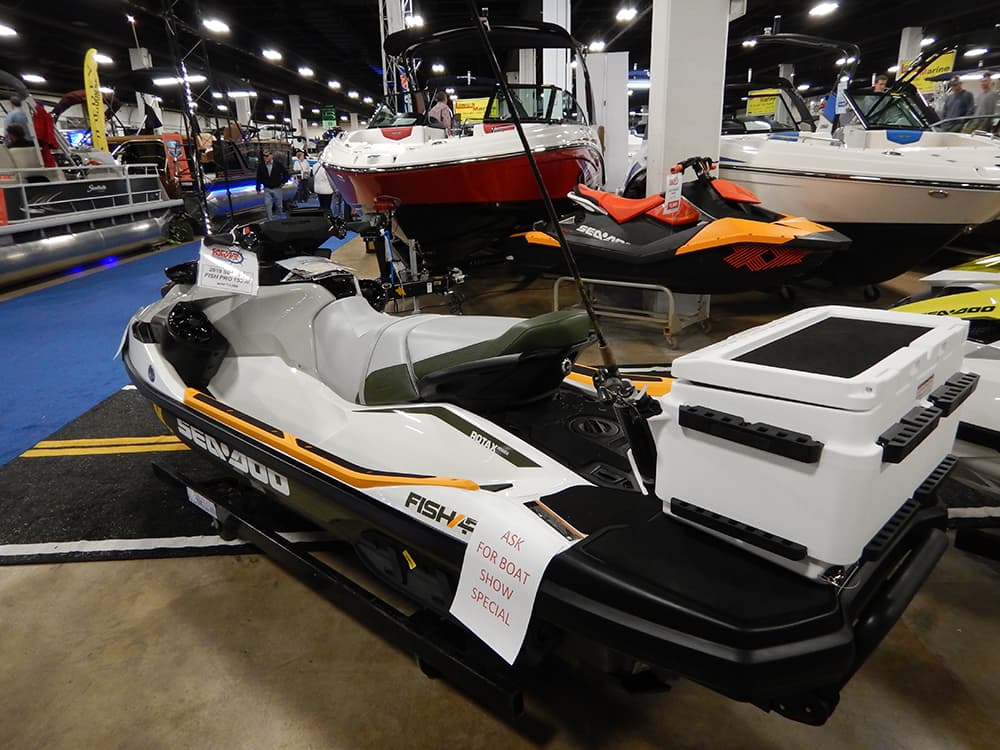
The definition of a fishing boat has expanded over the years
I am not in a hurry and don’t plan to fish tournaments, so I can live with outboards on the lower end of the range. In fact, I might troll to search for fish, so idling at lower speeds will be a plus.
Then I turned to some of the less critical features like color, finish and workmanship. Using this process, in just a couple hours of shopping I narrowed my choice to two or three boats. With one last lap, I made my choice.
Luckily for me, I forgot my checkbook.
All photos except top image by Jim Mize.


